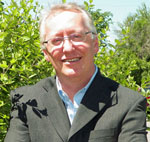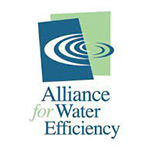 |
||||||||||||||||||||
| Subscribe | Past Issues | www.cwwa.ca | Water Source Magazine | ||||||||||||||||||||
|
CWWA News
I’m talking about the Window on Ottawa of course. This is one of the good things coming out of this pandemic. I know we all want to get together for a REAL conference, but we had already planned to take this event virtual so we could reach a wider audience. This information is too valuable to hold for just those that can travel to Ottawa each June.
Federal Initiatives
On March 26, 2021, the minister of infrastructure and communities, Catherine McKenna, launched an engagement paper on Canada’s first national infrastructure assessment: “Building the Canada We Want in 2050.” The paper seeks input on the following three main priorities of the assessment. Under the mandatory Greenhouse Gas Reporting Program (GHGRP), operators of facilities that meet the criteria specified in an annually-issued notice are required to submit their information to Environment and Climate Change Canada by June 1 of each year. The Program requires reporting from any facility that emits 10 000 tonnes of carbon dioxide equivalent or more (the “reporting threshold”) of GHGs in the 2020 calendar year. Some of the largest treatment faciliites could meet the reporting threshold, so members should be aware of this program. Health Canada recently published two new guidelines for drinking water quality for consultation. Both are for pesticides. The first is malathion a registered insecticide and acaricide used on a wide variety of sites including agricultural and non-agricultural sites. The guideline seeks to raise the Maximum Acceptable Concentration (MAC) from 0.19 mg/L (190 µg/L) to 0.29 mg/L (290 µg/L) based on updated science. The second is 4-Chloro-2-methylphenoxcyacetic Acid (MCPA) in drinking water. Again Proposed guideline – MCPA is a herbicide used in agricultural on turf and at industrial sites. Like malathion the new guidance proposes raising the MAC, from T 0.1 mg/L (100 µg/L) to 0.4 mg/L (400 µg/L) based on updated science. With sadness we announce the loss of our member Dave Foster of Utility Security Inc., on March 28, 2021. Dave was a member of CWWA’s Security & Emergency Management since its inception in 2001 being actively involved in the activities organized by the committee. He’s remembered as being friendly, approachable and ready to help whenever his expertise was needed. Our sincere condolences to his family and colleagues who will miss him. Member News
Provincial News
Ontario is updating its water quantity management framework. The update will:
This Bill proposes tougher fines and possible imprisonment for people interfering with critical infrastructure. The bill, if passed, would allow an owner or operator of infrastructure to apply for a court order to create a temporary protection zone. Included would be oil or natural gas pipelines, provincial highways, courthouses, hospitals and animal-processing facilities. If a person were to go into the area, he or she could be fined $5,000 or jailed for up to 30 days. A corporation could be fined up to $25,000. If a person didn't follow the court order, the fine could be imposed again. A court would be able to designate an area where people could protest. A bill targeting protesters became law in Alberta last year following cross-Canada demonstrations in support of Wet’suwet’en hereditary chiefs in British Columbia who were opposed to pipeline construction in their territory. Snippings & Clippings
Water Canada ECO Canada, the steward of the Canadian environmental workforce, has recently released “A Green Economic Recovery: Trends, Developments, and Opportunities for the Environmental Workforce.” The report covers key industry trends in the sector that could impact green talent across Canada. Water Canada While we all look forward to the end of the coronavirus pandemic, annual flooding caused by extreme weather is a problem that is here to stay. ESE Magazine British Columbia has reached the milestone of clearing every long-term water advisory in its First Nation communities, now that Semiahmoo First Nation has been connected to the municipal water system in nearby Surrey. ESE Magazine Fisheries and Oceans Canada has announced nearly $2.9 million to support nine research projects that will analyze the effects of contaminants like microplastics, oil, pesticides and pharmaceuticals on aquatic species. CBC News Halifax Water is appealing a ruling on a stormwater charge that could affect thousands of people whose properties have both commercial and residential usage. An independent dispute resolutions officer ruled in favour last month of Joanne Pullin, a Fletchers Lake resident who argued she could not afford to pay her annual stormwater bill after it jumped to $1,063.30 from $73.35. Governing.com Wastewater offers high-tech jobs at the leading edge of sustainability and public health. But aging workers are leaving, creating a shortage of skilled workers. Public utilities need to step up their recruitment game CNN Scientists are ramping up their efforts to track the nutrient-rich wastewater, contaminated by the Piney Point phosphogypsum stack, that's dumping into Florida's Tampa Bay, as concern remains high that it could supercharge potential toxic algae blooms, including red tide. QUEST.ORG Over the past year, QUEST and the Centre for Indigenous Environmental Resources (CIER) investigated whether the Smart Energy Communities Benchmark — an initiative to help municipalities, utilities, and community partners assess their energy practices and processes relative to Canadian best practices — could be adapted to suit the diversity of Indigenous communities across Canada.¹ Indigenous communities are becoming leaders in the energy economy — particularly as the low-carbon energy transition accelerates in Canada² — and early into our research, we noticed some key distinctions between Indigenous and municipal energy planning contexts and drivers. The Guardian The failure of governments around the world to place a clear value on water is leading to widespread water waste, shortages and high prices for poor and vulnerable people, the UN has warned. CBC The Coalition for the Protection of P.E.I. Water is concerned the Water Act might not improve things if the province goes against its own rules, as it did approving farmers' use of surface water for irrigation from the Dunk River during a drought last August. UPI For the first time, scientists have observed the release of blue-green algae toxins into the air. Traces of the algal toxin anatoxin-a, or ATX, sometimes called the Very Fast Death Factor, were measured at a Massachusetts pond that frequently hosts large algal blooms. Bloomberg Even before the pandemic, Americans were already flushing far too many wipes into the sewer system. After a year of staying at home, the pipe-clogging problem has gotten worse. Just ask Larry Hare, who says he immediately observed the change from his vantage point as the manager at a wastewater reclamation facility in Des Moines, Iowa. ESE Magazine As water workers discover more blockages in sewer lines, the Saskatchewan City of Prince Albert has issued an advisory to its 36,000 residents to stop flushing face masks down the toilet. ESE Magazine Upgrades worth $38.7 million will soon be in the works for part of the combined sewer system in uptown Saint John, where the New Brunswick city has some of the oldest wastewater infrastructure in Canada, including combined terra cotta sewers dating back to 1872 in the central peninsula. Washington Post Some wastewater utilities say they are facing a nasty pandemic problem: More disposable wipes being flushed down toilets are clogging pipes, jamming pumps and sending raw sewage into homes and waterways. |
||||||||||||||||||||




